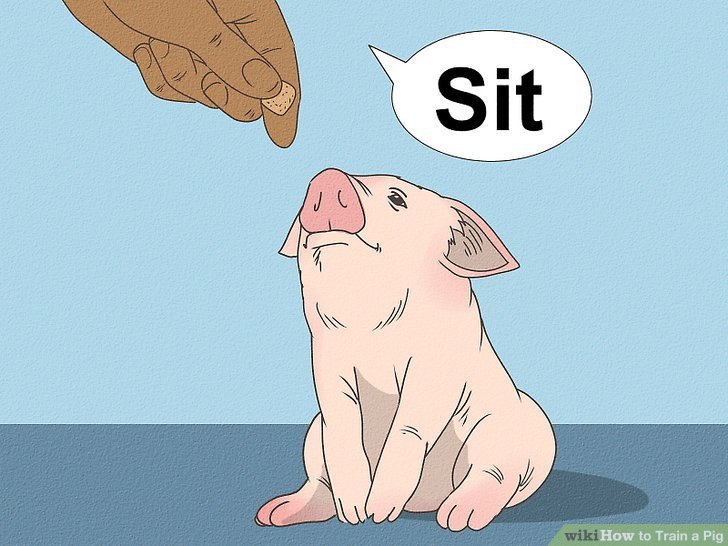
Imagine trying to convince a friend to go to a restaurant they don’t like. You likely wouldn’t force them; instead, you’d find common ground, entice them with yummy food, or even dangle something else they enjoy as a reward. The same principle applies to training your pig—it’s all about finding what resonates with them. Using the right techniques can lead to a more harmonious relationship between you and your porcine friend.
In this guide, we’ll walk through how to handle and train a stubborn pig. From understanding their behavior to utilizing effective training methods, you’ll learn how to build trust and cooperation with your pig. Let’s get started!
Understanding Your Pig’s Behavior
To train a stubborn pig effectively, it’s crucial to first understand their behavior. Pigs are highly intelligent animals and can often outsmart their handlers if they’re not careful. They have their own unique personalities; some might be adventurous and curious, while others are laid-back and stubborn.
Consider this: when a pig refuses to follow commands, it might not be a sign of defiance; they could simply be confused or uninterested in the reward you’re offering. Each pig has different motivators, whether it’s food, praise, or even a good scratch behind the ears.
Be vigilant and observe your pig’s body language. Are they turning away when you call them? This could indicate disinterest. On the other hand, if they approach you with a wagging tail, they are probably eager for interaction. Never underestimate the power of understanding your pig’s emotions; emotional intelligence goes a long way in animal training.
Setting the Stage for Training
Before diving into training sessions, you need to set up an environment that’s conducive to learning. Think about it: would you find it easy to focus in a noisy, chaotic room? Pigs need a calm and quiet space to learn efficiently.
Start by choosing a location free from distractions. This could be a fenced yard or a designated area in your home. Make sure it’s a spot where your pig feels safe and comfortable. You might even consider creating a routine. Just like kids thrive on consistency, pigs do too! A familiar training schedule can help reinforce behaviors over time.
Also, gather your training supplies. Treats are a great motivator; think of them as your pig’s version of dessert. High-value treats like fruits or commercial pig snacks can work wonders. Remember, the goal here is to create positive associations, so choose something your pig really loves.
Using Positive Reinforcement Techniques
Positive reinforcement is the backbone of effective pig training, and it works like a charm. Instead of focusing on what your pig shouldn’t do, emphasize what they should do—and reward them for it. Here’s the thing: when your pig does something right, like following a command or walking in your direction, celebrate that moment!
When training, use an upbeat voice and plenty of enthusiastic praise. Your excitement can be contagious. Pair your praise with a treat immediately after they do what you asked. This association helps them understand that good behavior leads to great rewards.
At times, you may feel frustrated, especially if your pig seems stubborn. Just remember to stay calm and patient. If they don’t seem to understand a command, don’t force the issue. Instead, go back to basics or adjust your approach. Every pig learns at their own pace.
Basic Commands Every Pig Should Know
Teaching your pig basic commands is essential for effective handling and training. Here are a few fundamental commands to start with:
- Come: Use a treat to lure your pig towards you while saying “come.” Gradually increase the distance.
- Sit: Hold a treat above their head and move it back slightly. As they look up, they’ll naturally sit down. Once they do, reward them immediately.
- Stay: With your pig in a sitting position, take a few steps back and say “stay.” If they don’t move, reward them. If they do, gently guide them back and try again.
These commands not only keep your pig safe but also enhance your bond. Each command reinforces trust and communication between you two. When they know what you expect, they’re less likely to feel stressed or confused.
Recognizing Signs of Stress or Discomfort
Training can sometimes push your pig outside their comfort zone. It’s essential to recognize signs of stress or discomfort during training sessions. Pigs might show this in several ways, like becoming agitated, vocalizing more than usual, or even refusing to engage.
If you notice your pig acting this way, take a step back. Allow them to relax and regroup. Sometimes, all it takes is a little break and a change of scenery. Don’t push too hard—forcing a pig can lead to mistrust, making them even more stubborn.
Listening to your pig’s cues is vital. You might find that shorter sessions with frequent breaks work much better than longer, drawn-out training marathons. Aim for a few minutes of focused training followed by a fun bonding time, like a scratch or a treat.
Troubleshooting Common Training Challenges
Even with the best intentions, you might hit a few bumps along the way. If your pig isn’t responding to training as you hoped, don’t be disheartened. Here are a few challenges you might encounter, along with how to tackle them:
– Refusal to take treats: If your pig isn’t interested in treats, try changing the type of reward. Maybe they prefer a scratch or playtime instead.
– Inconsistent responses: Pigs are creatures of habit. If they’re responding one day and not the next, consider whether they’re stressed or if the surroundings have changed. Consistency is key.
– Short attention span: If your pig seems to lose interest quickly, shorten the sessions. Aim for engaging, brief bursts to keep them focused and motivated.
By troubleshooting these common challenges, you’ll develop a deeper understanding of your pig’s behavior and needs. Remember, patience and adaptability can turn obstacles into learning opportunities.
Building a Lasting Bond with Your Pig
Training a stubborn pig isn’t just about teaching commands. It’s also about building trust and connection. Spending quality time together outside of training can strengthen your relationship considerably.
Try engaging in activities your pig enjoys, whether it’s outdoor exploration, simple games, or even just relaxing side by side. Letting them see you as a friend rather than just a handler can make a world of difference.
Approach your pig with kindness, and they’ll likely return that energy. When your pig feels safe and respected, they become more willing to engage and cooperate during training sessions. Remember, every moment spent together is an opportunity to reinforce your bond.
By understanding their behavior, setting a positive training environment, and using effective techniques, you and your stubborn pig can thrive together. It’s a journey that takes patience, love, and a sprinkle of humor, but with time, you’ll build a lasting partnership that feels rewarding for both of you. Happy training!

